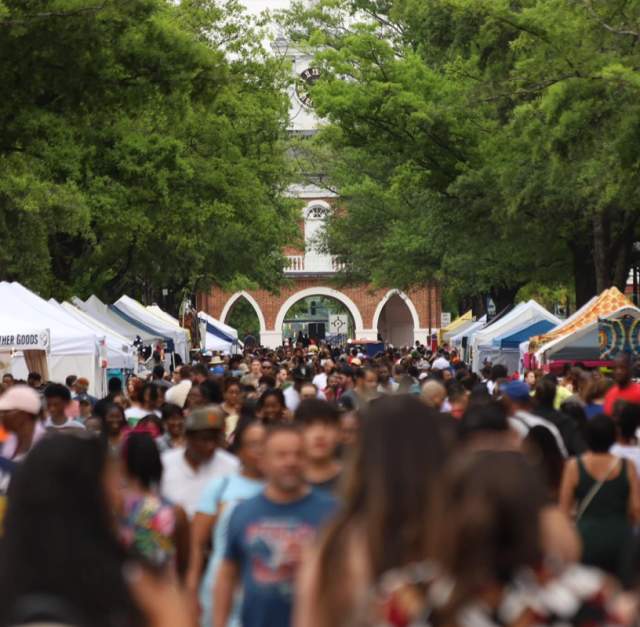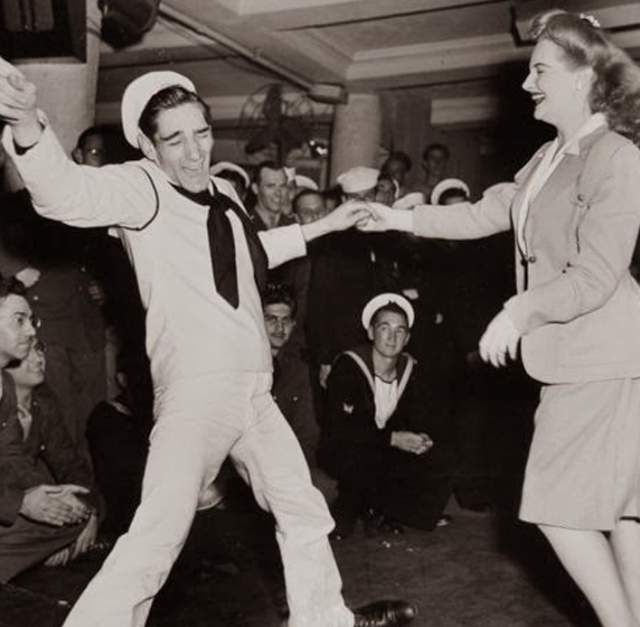![]() You can see proof of that as you pass by Cross Creek Cemetery or visit Long Street Church Cemetery on today’s Fort Bragg. The first apparent influx of Highland Scots to the Upper Cape Fear came in 1739 when a large group of Argyll immigrants sailed from Scotland on a ship called the Thistle. Many land grants were issued to these and other Highlanders as a result of the Royal Governor of North Carolina encouraging Scots to emigrate, citing warm climate, free land grants, and tax exemptions. It is important to note that English and Scots-Irish settlers also arrived early to the area. Unlike other ethnic groups, the clan-conscious Highland Scots tended to cluster together in settlements. By 1750, thousands of acres of land had been granted to the Scots.
You can see proof of that as you pass by Cross Creek Cemetery or visit Long Street Church Cemetery on today’s Fort Bragg. The first apparent influx of Highland Scots to the Upper Cape Fear came in 1739 when a large group of Argyll immigrants sailed from Scotland on a ship called the Thistle. Many land grants were issued to these and other Highlanders as a result of the Royal Governor of North Carolina encouraging Scots to emigrate, citing warm climate, free land grants, and tax exemptions. It is important to note that English and Scots-Irish settlers also arrived early to the area. Unlike other ethnic groups, the clan-conscious Highland Scots tended to cluster together in settlements. By 1750, thousands of acres of land had been granted to the Scots.
Some of the reasons for their leaving Scotland were unemployment, displacement of farmworkers, increased rent for tenant farmers, low livestock prices, and an attempt to cling to the ways of their culture and preserve their values. In later years, the migration of Scots increased as a result of the British defeating the Scottish at the Battle of Culloden in 1746. At that point, immigrants were allowed to take the loyalty oath and then migrate to the colonies. While those Highland Scots educated in British schools knew English, most commoners who emigrated only spoke Gaelic. Therefore, printers issued numerous 18th-century documents in Gaelic.
There were three main pillars in the Scottish way of life – religion, education, and subsistence (in the form of farming and enterprise). The majority of Scots were Presbyterian, and Reverend James Campbell has been credited with creating three formal congregations for the Scottish population; Bluff, Barbecue, and Long Street Churches. Campbell gave sermons in Gaelic but also gave English sermons for the English or Scots-Irish residents as well.
In this area, there was a strong, successful merchant class consisting of prominent figures such as Andrew Broadfoot, Robert Adam, James Hogg, and Robert Donaldson. Several Scottish settlers were also artisans and tradesmen, such as stonemasons like George Lauder and architects or builders such as William Bell. Standing architecture today is a testament to this early merchant class.
Although some Scottish settlers were tradesmen, a lot relied on agriculture to survive. Crops planted here were maize, wheat, oats, sweet potatoes, legumes, and flax. Grist mills were created to produce meals from corn. Another important product of the area was naval stores, which included tar, pitch, and turpentine, primarily used for shipping. In tandem with the naval store's industry was sawmilling and coopering. Spinning and processing cotton became a viable commercial enterprise and provided work for many Scottish women and girls.
When the Revolutionary War broke out, Scottish settlers took both sides of the conflict. Most pre-1760 Scottish immigrants tended to align with the Whigs, known as the Patriots or Rebels, and those that settled here after the 1760s were generally Tories or Loyalists. The British offered many incentives to the Colonies in exchange for Loyalist supporters and military volunteers, including land grants and tax exemptions. Some also sided with the British for fear that their families back home in Scotland would suffer if the colonists defied Britain. After the Revolution, trade was stimulated by regional fairs called “Scotch Fairs” which later developed into present-day Scottish Highland Games and served as centers for trade, entertainment, and socialization.
By the early 1800s, Scots appeared to be the largest, most cohesive population residing in the Upper Cape Fear region. As a part of that influence, they were early officeholders at all levels. Today, the area has diversified in ethnic populations, but the descendants of the early Scottish settlers are still active and proud of their heritage. An example of this cultural celebration is an organization called the Cape Fear Valley Scottish Clans, which hosts an annual Robert Burns’ Supper.
Click here for turn-by-turn instructions.
You Might Also Like
African-Americans on the River
A new exhibit, African-Americans on the River, opens Tuesday at the Fayetteville History Museum…
OPENING THE VAULTS: Treasures of the Fort Liberty Museums
The U.S. Army Airborne and Special Operations Museum (ASOM) will open on March 14, 2024, its new…
42nd Annual Fayetteville Dogwood Festival
Let's help celebrate 42 years of community fun and festivities as the Fayetteville Dogwood Festival…
April 4th Friday feat. Poetry Cypher
Experience the fun at 4th Friday! Our April 4th Friday will be held on April 26 from 6 pm to 9 pm in…
Historical Summer Sewing Workshop: 1940s Time to Dance
Join us for our Summer Sewing Workshop to create a Boogie Woogie Beautiful 1940s Dance Dress! And…






